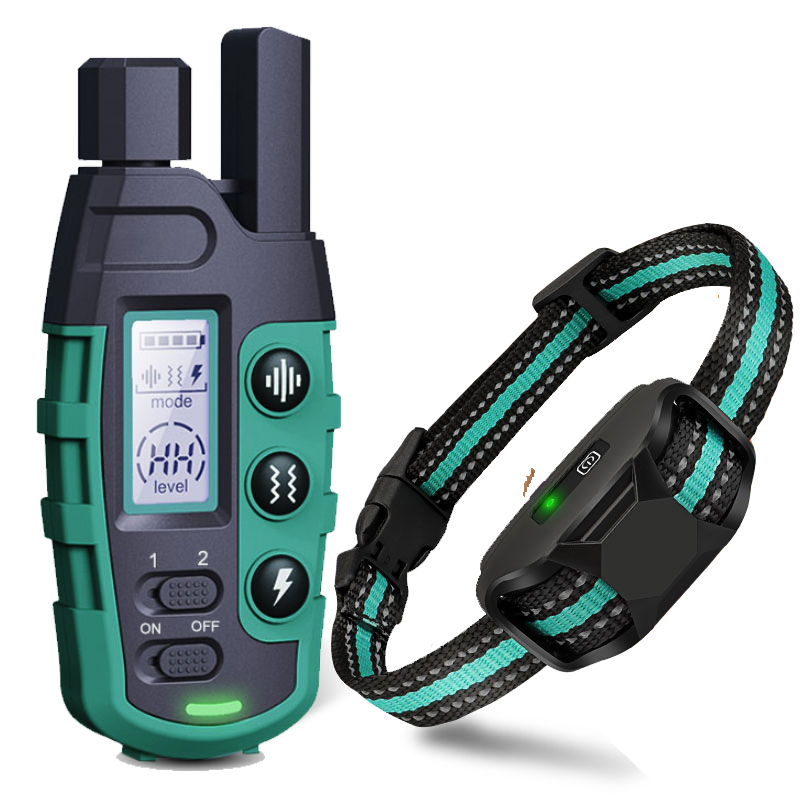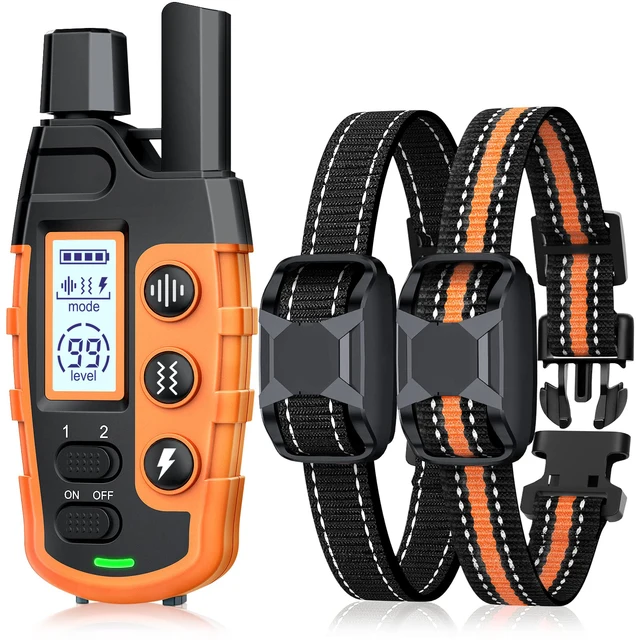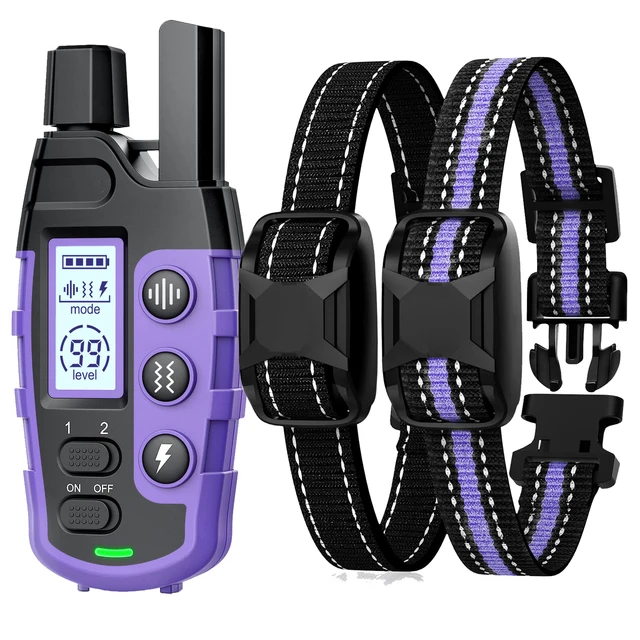Introduction to E-Collar Training
Welcome to the primer on using an e-collar for enhancing your dog’s recall capabilities. An e-collar, when used rightly, serves as a powerful tool, bridging communication gaps between you and your dog. It enables prompt corrections and precise guidance during training sessions without the necessity for physical restraint. So how to train a dog with an e collar? This article explores how to properly utilize an e-collar for dog training, covering essential techniques, tips, and best practices.

Basic Understanding of E-Collars
An e-collar is a remote-controlled device that prompts your dog through vibrations, sounds, or mild electrical stimulations. This device consists of a collar with a receiver that communicates with a handheld transmitter. The primary goal is to capture your dog’s attention and provide cues for desired behaviors.
Safety and Efficacy in Training
Safety is paramount when training with an e-collar. Start with ensuring the collar fits snugly without causing discomfort to your dog. Familiarize yourself with the device’s function settings and always begin at the lowest stimulus setting to find the appropriate level that your dog responds to without distress. The efficacy of e-collars in training has been acknowledged, particularly in teaching recall commands where immediate feedback is crucial. Nevertheless, it is vital to combine e-collar training with positive reinforcement techniques to ensure a happy, obedient, and responsive companion.
Preparatory Steps for E-Collar Training
Before diving into e-collar training, preparation is key. You must assess your dog, fit the collar properly, and find the optimal stimulation level.
Assessing Your Dog?s Suitability
Not all dogs are the same. Age, breed, temperament – they all matter. Check if your dog is ready for an e-collar. Over six months old is often advised. They should know basic commands too. Think ‘sit’, ‘stay’, or ‘come’. This ensures they associate e-collar cues with known commands.
Fitting the E-Collar Correctly
A good fit is crucial for the e-collar to work. It should be snug, but not tight. You want the prongs to touch the skin, but ensure your dog’s comfort. Two fingers under the collar is a good rule. That way, you avoid it being too tight or too loose.
Discovering the Optimal Stimulation Level
Start low with the e-collar settings. Observe your dog carefully. Look for a slight reaction, like a head turn, but no stress signs. Increase slowly if needed. The aim is to find a level where your dog notices the stimulation, but isn’t hurt or scared. This level is known as the ‘working level’. It’s different for each dog. Use it consistently during training sessions.
Core Training Techniques
When implementing e-collar training for your dog’s recall, it’s crucial to develop a solid foundation with some core training techniques.
Establishing Basic Commands First
Before introducing the e-collar, ensure your dog masters basic commands such as ‘sit’, ‘stay’, and ‘come’. These commands are vital as they lay the groundwork for e-collar integration and more advanced training.
Integrating E-Collar with Commands
Once your dog understands basic commands, begin integrating the e-collar. Use it to reinforce commands, pressing the button as you issue the command. This helps your dog associate the e-collar’s stimulus with the familiar command.
Addressing Common Recall Challenges
Recall challenges often arise from distractions. Start training in a low-distraction setting and gradually introduce new distractions. Reward your dog for successful recall despite these challenges to cement the behavior.
Enhancing Recall Reliability
To improve your dog’s recall with an e-collar, start with minimal distractions. Increase distractions slowly to help your dog focus.
Gradual Increase in Distraction Levels
Begin recall training in a quiet area. Slowly add more distractions like toys or other people. Reward your dog for focusing and returning to you amid distractions.
Consistent Practice and Reinforcement
Practice recall daily. Use the e-collar consistently with each command. Reward your dog’s correct responses to strengthen recall behavior.
Advanced E-Collar Features
When prioritizing efficient recall training, harnessing advanced features of an e-collar can significantly elevate your training efficiency. Delving into vibration and tone settings along with GPS tracking can orchestrate a superior command over your dog’s training process.

Using Vibration and Tone Settings
Vibrations and tones are pivotal for dogs sensitive to static shocks or for initial training phases. Initiate with tones or vibrations as a warning or cue before progressing to static if needed. This method assists in conditioning your dog, reducing reliance on static corrections.
GPS Tracking and Boundary Settings
Integrating GPS enhances safety and management for training in vast, unenclosed areas. It ensures your dog remains within designated boundaries. Employ GPS tracking to map out boundaries and monitor your dog’s exact location, fostering a better training regimen and ensuring safety outdoors.
Troubleshooting Common Issues
When training a dog using an e-collar, you may face a few challenges. Addressing these early ensures effective and humane e-collar usage.
Overcoming Fear or Resistance to Collar
Some dogs show fear or resist wearing an e-collar. Start by associating the collar with positive experiences. Place the collar near their sleeping area or during enjoyable activities. Introduce the collar gradually, allowing them to wear it without activation for short periods. Pairing it with treats and affection helps them associate it with something positive. Gradually increase wearing time before starting actual training.
Adjusting Incorrect Stimulus Levels
Finding the right stimulus level is crucial to successful e-collar training. If the level is too low, your dog may not respond. If too high, it could cause stress or fear. Begin with the lowest setting and watch for a slight response, such as a head turn, without discomfort. Gradually adjust until you find the optimal ‘working level’ for training. Make sure to regularly reassess and adjust the levels as your dog’s tolerance can change over time due to various factors including familiarity and training progress.
Ethical Considerations and Best Practices
When adopting e-collar training, ethical considerations and best practices are paramount. Ensuring humane training techniques while maintaining the effectiveness of the e-collar is essential for the well-being of your dog.
Humane Use of E-Collars
To ensure humane use of e-collars, start by selecting the appropriate device. Choose a collar with adjustable intensity levels. This allows personalized settings that suit your dog’s sensitivity and tolerance. Next, always begin training with the lowest stimulation level. Monitor your dog’s reaction to adjust the setting just enough to get a response without discomfort. Use vibrations or tones initially, and reserve static stimulation for specific training needs. Consistently pair e-collar use with positive reinforcement such as treats and praises. This approach reinforces good behavior and ensures the collar is not solely associated with correction.
Regular Assessment and Adjustment
Regularly assess and adjust the e-collar settings as your training progresses. What works today might not be suitable as your dog becomes more accustomed to the collar or as scenarios change. Remember, the ‘working level’ might shift, so frequent checks are necessary. Also, reevaluate the fit of the collar as your dog grows or if there are changes in weight. Maintaining an optimal fit is crucial for the collar’s effectiveness and your dog’s comfort. Ensure ongoing supervision when your dog wears the e-collar and avoid leaving it on for extended periods to prevent pressure sores or discomfort.

Conclusion: Enjoy the Training Journey
Training your dog using an e-collar can be an effective approach to fostering positive behaviors and reinforcing obedience. However, it is crucial to approach this method with care, patience, and understanding. With proper preparation, consistent techniques, and ethical considerations, you can embark on a fulfilling training journey with your furry companion.
Utilizing an e-collar shouldn’t be a way to exert dominance over your pet. Instead, see it as a tool for enhancing communication and learning. The more you understand your dog’s behavior and motivations, the more successful your training endeavors will be. Enjoy the process, celebrate your dog’s successes, and build a lifelong bond based on trust and understanding.